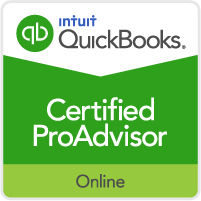
The standard average hourly rates increased by 8.6% from $69 (2019) to $75 (2021). Based on the data available, however, it appears as though we gave ourselves a raise since the last survey was done in 2019. It is important to note that only 48% of survey respondents were willing to provide their average hourly rate. Hourly billing methods are also predominantly used for technology consulting (40%) and advisory services (50%). However, fixed fee pricing was the most popular method to bill clients for payroll (43%) and tax preparation services (27%).Īs observed in prior years, the survey results continue to suggest that accounting professionals prefer to bill hourly for services where there is a higher degree of uncertainty about the time and effort needed to complete the work. Since our last survey in 2019, value pricing has declined by almost 10% indicating a shift toward other billing methods for ongoing monthly services. When it comes to billing for monthly services, our respondents preferred to use either hourly billing (50%) or fixed-fee billing (49%). When billing for QuickBooks-related services, hourly billing is still most commonly used for monthly accounting/bookkeeping (50%), catch-up accounting/bookkeeping (62%), clean-up or troubleshooting (66%), QuickBooks set-up (47%), and QuickBooks training (58%). Fixed fees, with the fee often determined based on estimated hours (or cost) to complete the work.Value billing is usually marking up-or more frequently marking down-the invoice to the client after the work has been performed.Value pricing based on the maximum amount a given client is willing to pay for a service, typically set before the work begins.Hourly billing based on the hours worked.The survey asked practitioners how they billed their clients for various service offerings based on the following definitions:
#Quickbooks pro advisor rate professional#
This year, we included Business Advisor or Coach as a professional designation, and 25% of respondents identified themselves as such. Selected bookkeeper (65%) or accountant (40%) as one their professional designations.Belonged to the QuickBooks ProAdvisor® program, with 51% belonging to the free QuickBooks Online program, and 48% (combined) belonging to one of the QuickBooks Desktop paid programs.Were solo-practitioners (48%) or small firms with 2-5 employees (32%).The following data tells us that most survey respondents: We’re excited to share our discoveries in future articles! Who participated in the survey? We were also interested to learn how practitioners were billing for advisory and technology consulting services.


#Quickbooks pro advisor rate series#
This year we also asked specific questions regarding COVID-19 and its impact on your firm’s gross profit margins and average fixed prices, while also touching on how our clients were affected.Ī series of questions pertaining to referral sources and social media marketing were also asked to gain insight into how firms are attracting new business. As in past years, the 2021 survey asked a variety of questions related to firm demographics, methods used to bill clients for different types of services, and of course, how much practitioners are charging for these services. Over the next few weeks, we will be sharing the insights we learned in a series of articles that will be published on Firm of the Future. We are excited to share the initial results with you. The 2021 Intuit® Rate Survey results are in! If you were one of the almost 900 accounting and bookkeeping professionals who participated in the survey, you have our deepest gratitude!


 0 kommentar(er)
0 kommentar(er)
